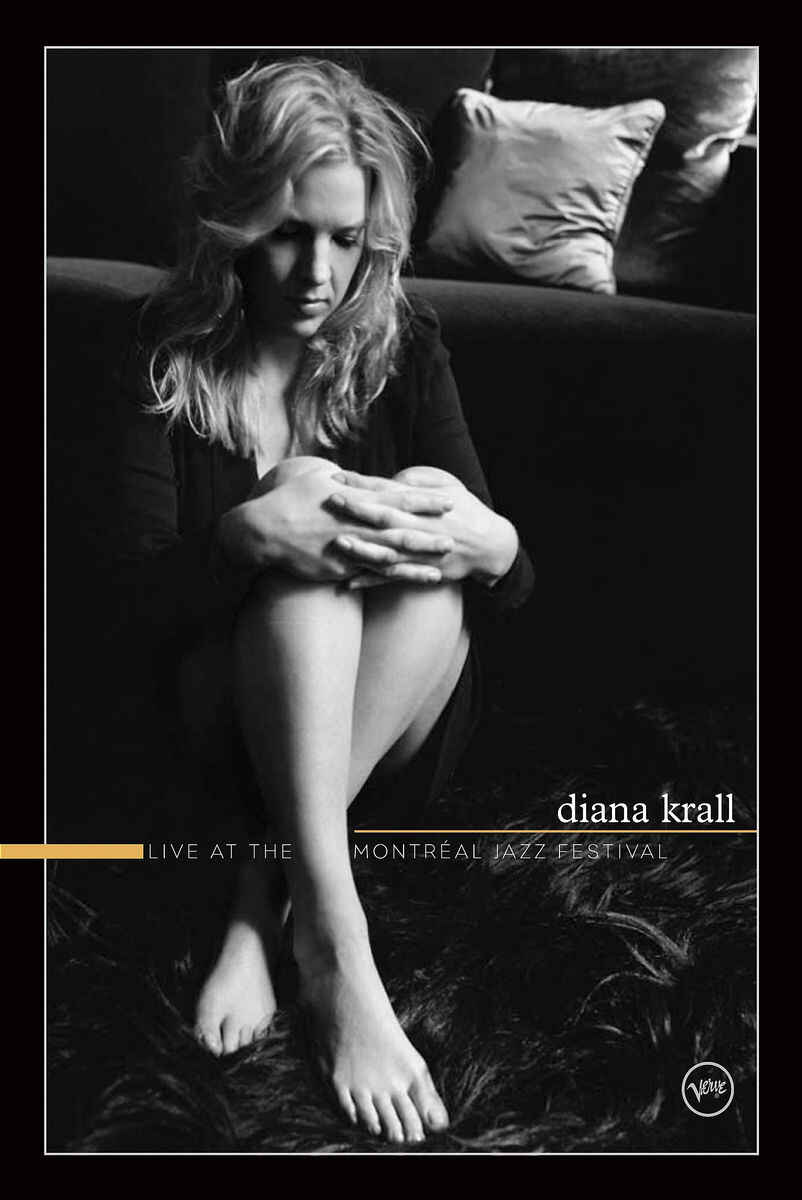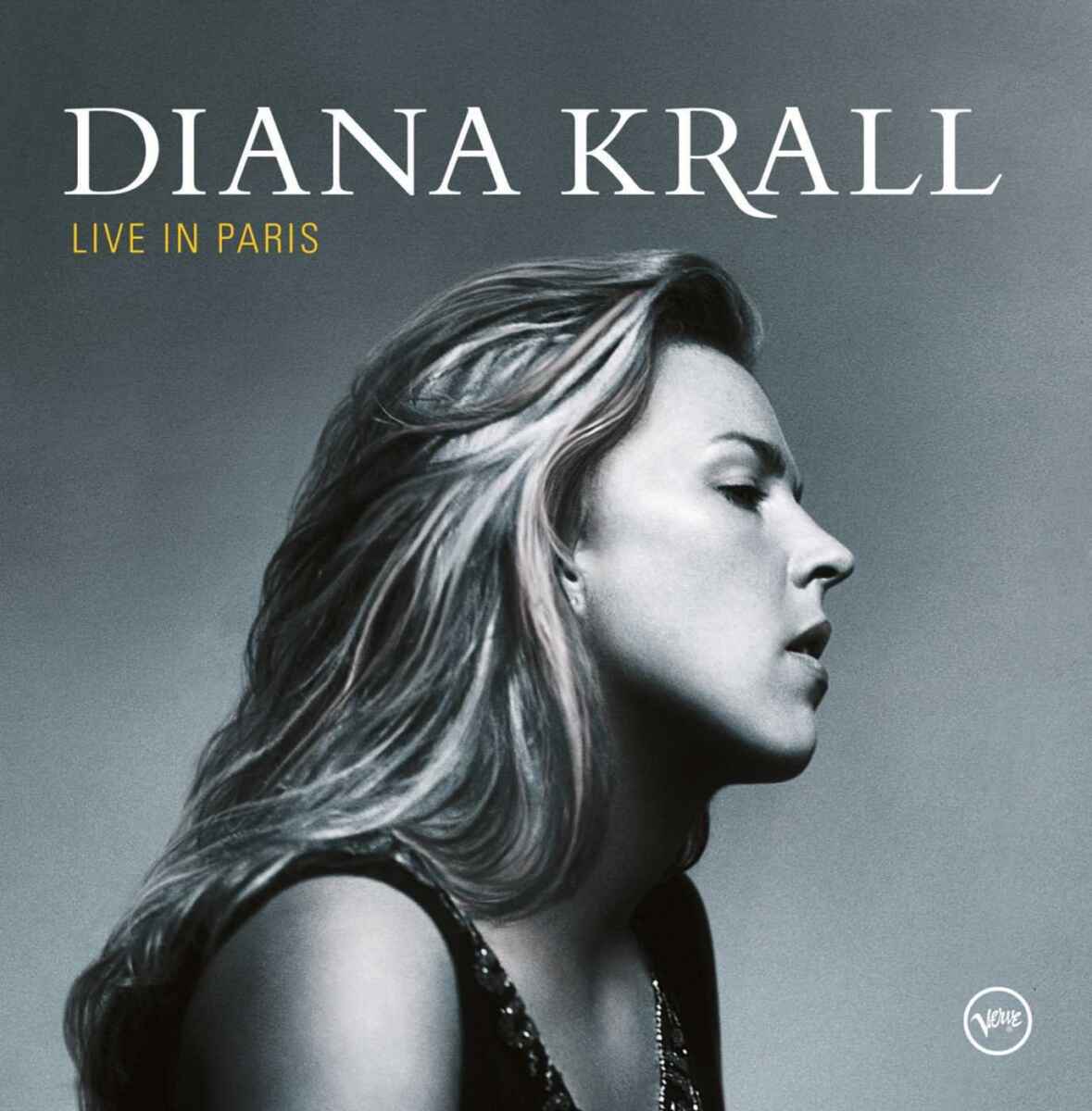
[Concert review from September 1, 2000] What one could guess from listening to her last CD When I Look In Your Eyes which was rightly awarded a Grammy, has fully been confirmed at the Montreux Jazz Festival on July 18, 2000: Diana Krall has become the contemporary female jazz singer (Diana Krall sheet music).
Diana Krall at the Montreux Jazz Festival 2000
The Auditorium Stravinsky in Montreux was sold out. A mature pianist and singer with a subtle modulating and smoky voice was accompanied by bassist Ben Wolfe, drummer Rodney Green and guitarist Dan Faehnle, who, together with Diana Krall, was responsible for the musical highlights. Later, they were joined by a special guest. The quartet played standards which have been heard a million times before – but in a fresh interpretation and a perfection hardly ever seen before.
Diana Krall began the concert with East of the Sun (West of the Moon), which she already had recorded on Only Trust Your Heart (1995) and on When I Look in Your Eyes (1999). Guitarist Dan Fachule had to fight some technical problems and Krall’s voice did not yet fully unfold its irresistible charm. But already with the second song, All or Nothing at All, which is to be heard on her 1997 album Love Scenes, she enchanted the audience with her smokey-disreputable sprechgesang. She set her singing against the strong rhythm of the bass, and the guitarist delivered a remarkable solo part. Diana Krall’s words “if I fell under the spell of your call” were sung in the conditional, the audience (the writer of these lines included) had already unconditionally fallen under her spell.
Let’s Fall in Love, also to be heard on When I Look in Your Eyes, was played in a catchy but never clumsy way. Piano and guitar evolved on the same level, whereas drums and bass – as for the rest of the evening – were exclusively dedicated to the support and played no role on their own. Cole Porter’s ballad I’ve Got You Under My Skin followed. The way Diana Krall articulated all the words properly and transmitted the songs message, and the expressive way of singing went under the listeners’ skin. In short: it was sensational. She is today’s First Lady of Jazz. But unfortunately, only Devil May Care (to find on her latest album) and Case Of You followed in her style.
After only six songs, much too early, the special guest and eight-times Grammy winner George Benson joined Diana Krall’s quartet — and completely altered the concert’s nature. With Horace Silvers’ Juicy Lucy, another sound — the one of George Benson and his guitar — began to dominate. Although I am a fan of the American, the way the atmosphere created by Diana Krall was suddenly and brutally destroyed. This was a shame, especially considering that George Benson was to have his own show later in the evening. Lost Mind by Percy Mayfield, a second version of East of the Sun (West of the Moon) and SKJ by Michael Jackson were by no means bad interpretations, but they had nothing to do with the magic and intensity of Diana Krall’s first six songs. It was an entertaining mix of blues, R&B, soul and pop which pleased the crowd, but the high artistic claim had been abandoned.
A long time ago, the Montreux Jazz Festival has become an all music festival. What Claude Nobs has started more than 30 years ago with about 1,000 listeners has become the world’s biggest music event with more than 1,000 invited artists. The festival allows unusual and even unique combinations of musicians. Sometimes, great moments result from this. With Diana Krall and George Benson, the experiment did not completely go wrong, but instead of a special guest trying to fit into the Canadian singer’s sound, Krall’s quartet had to adapt to Benson’s style.
At the end of the concert, Diana Krall offered a solo performance in her unique style and, as in the beginning, on a level only matched by Ella Fitzgerald before her. I Fall In Love To Easily seemed to come from the bottom of her heart and brought back the magic to the Auditorium Stravinsky. After years of hard work, Diana Krall has reached the Olymp of jazz. Where will her music lead her in the future? A progression seems almost impossible. To speak with German poet Johann Wolfgang von Goethe: I wished the moment could remain (Zum Augenblicke dürft ich sagen: Verweile doch, du bist so schön! (Faust II).
Diana Krall: Live At The Montreux Jazz Festival. This DVD was released in November 2004. It contains 14 songs as well as a photo gallery, lyrics and biography. Song list: Sometimes I Just Freak Out, All Or Nothing At All, Stop This World, The Girl in The Other Room, Abandoned Masquerade, I’M Coming Through, Temptation, East Of The Sun (And West Of The Moon), Devil May Care, Black Crow, Narrow Daylight, Love Me Like A Man, Departure Bay, Narrow Daylight. Order the DVD from Amazon.com, Amazon.co.uk, Amazon.de, Amazon.fr.

Another live performance: Diana Krall: Live in Paris. Universal Music, 2002. Order the CD from Amazon.com, Amazon.co.uk, Amazon.fr, Amazon.de.

Early biographical information about Diana Krall first published on September 1, 2000
Diana Krall was born in the city of Nanaimo in British Columbia, Canada. Both her father and mother played the piano. Sundays, the whole family used to sing and play music together at the grandmother’s house. At the age of four, Diana Krall began to study classical piano. In the school band, she played jazz, together with her bass teacher Bryan Stovell. With 15, Diana had her first gig at a restaurant in Nanaimo. She used to perform three nights a week. In 1981, a Vancouver Jazz Festival scholarship allowed her to study for 18 months at the famous Berklee College of Music in Boston. Back in British Columbia she became friends with Jeff Hamilton and bassist Ray Brown. They encouraged her to move to Los Angeles, which she did thanks to a grant by the Canadian Arts Councils. She studied with pianist Jimmy Rowles. Together with Jeff Hamilton, bassist John Clayton and the support of Ray Brown, Diana Krall recorded her debut album Stepping Out. In 1984, she returned to Canada and continued her studies in Toronto with bassist-pianist Don Thompson. In 1990, she moved to New York, but had most of her gigs in Boston with a trio together with bassist Whit Browne and drummer Klaus Suonsaari.
As her models, Diana Krall once mentioned Carmen McRae and other female singers and pianists, but above all, Nat King Cole was an inspiration to her. At home, she listened to her father’s records of Fats Waller. Later, Sting, R&B and Ahmad Jamal were other influences. Diana Krall continuously worked her way up and, in the mid-1990s, she began an incredible development. Her records Only Trust Your Heart (1995) and All For You (recorded in October 1995 in New York City) were an homage to the Nat King Cole Trio of the years 1943 to 1951. They were the expression of a promising and expressive talent with a distinctive personality. All For You was her break-through album and remained for one year in the Top Ten of Billboard’s Traditional Jazz Charts. In January 1997, she was nominated for a Grammy as Best Jazz Vocal Performance.
Love Scenes from the year 1997 contains some outstanding ballads such as I Miss You (Jimmy Henderson, Bertha Scott and Sid Robin, 1939) and They Can’t Take That Away from Me (Ira and George Gershwin, 1936). Here and there, she still lacked a bit of character, e.g. in Peel Me a Grape (Dave Frishberg, 1962) or in All or Nothing at All (Jack Lawrence and Arthur Altman, 1939). Overall, Love Scenes is an impressive album although her inimitable voice was not yet fully established, though it can be heard in the song My Love Is (Billy Miles, 1960). Diana Krall’s latest album, When I Look In Your Eyes (1999), is simply sensational and, as stated at the top, earned her a Grammy.
A must: Diana Krall: When I Look In Your Eyes. Audio CD, 1999, Universal/Impulse. Order the CD from: Amazon.com, Amazon.co.uk, Amazon.de, Amazon.fr.
Concert review and biography from “old cosmopolis”, September 1, 2000. Republished on our WordPress pages on April 27, 2022 at 16:40 Swiss time.